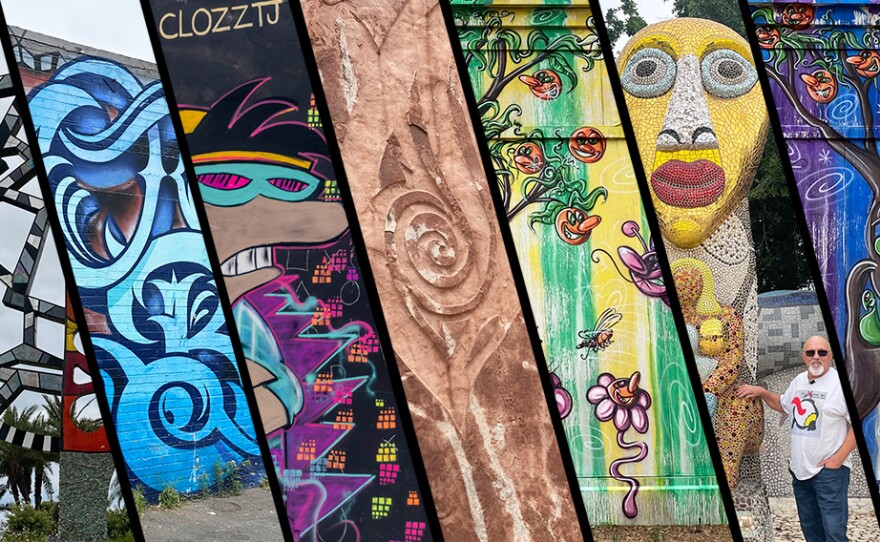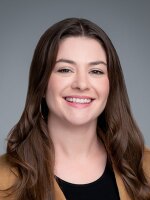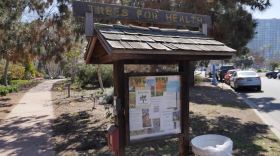A Burmese monk towers over Ivy Street in South Park, three stories tall, umbrella radiating over reds and yellows and layered stenciling.
There’s no signature on the mural. Passersby may have no idea it was painted by one of the world’s most famous street artists.
But the hues and thick black lines are reminiscent of the 2017 Women’s March We the People poster series, Obama’s 2008 hope campaign poster and the now almost ubiquitous Andre the Giant “obey” image. Those lines offer clues.
The creator is famous street artist Shepard Fairey.
The South Park piece is one of the only remaining murals from the 2010 “Viva la Revolución” exhibit on art and the urban landscape by the Museum of Contemporary Art San Diego, said senior director Jenna Jacobs. Another is an “obey” stencil by Fairey on Kettner Boulevard.
At the time, Fairey said it was nice to paint something more permanent.
He’s known for stickering and pasting his images on city walls. He said the exhibition invitation was a much better experience than being harassed by police when he lived in San Diego in the late 1990s, early 2000s.
“He was literally almost on probation for putting up stickers,” Jacobs said.
The exhibit, and murals like this one by Fairey, helped pave a way for street artists to be seen as legitimate. Jacobs said in the more than a decade since that exhibit, it’s become more common for street artists to show in prominent galleries.

Jacobs said Fairey remarked on that tension between the philosophy of street art and exhibiting for a museum when he painted the mural.
Historically, street art has offered a way for marginalized artists to access an often elitist, costly art world. It also brings art to people who may not have the time or money to visit museums.
The only other remaining mural from the exhibit is also by Fairey, on the wall of the former Corvette Diner in Hillcrest, now Snooze. A warehouse-style restaurant space was built on the parking lot abutting the building, but his mural was never removed. It remains sandwiched between the walls, hidden from view.
If diners could see through the walls, they’d read another of Fairey’s ironic encouragements to challenge authority: “Obey. Never trust your own eyes. Believe what you are told.”
Fairey came of age in the punk scene of the 1980s and often depicts punk and rock-n-roll icons and revolutionary figures from history, Jacobs said.
People who are “dissenting from the mainstream,” she said, who are “bringing voice to something that isn’t necessarily what the most popular idea is.”
Fairey painted the South Park mural just three years after the Saffron Revolution, in which Burmese monks challenged the military dictatorship of Myanmar.
Like the monks’ protests, Fairey saw street art as nonviolent protest — a way to cause people to question the systems under which they live.







